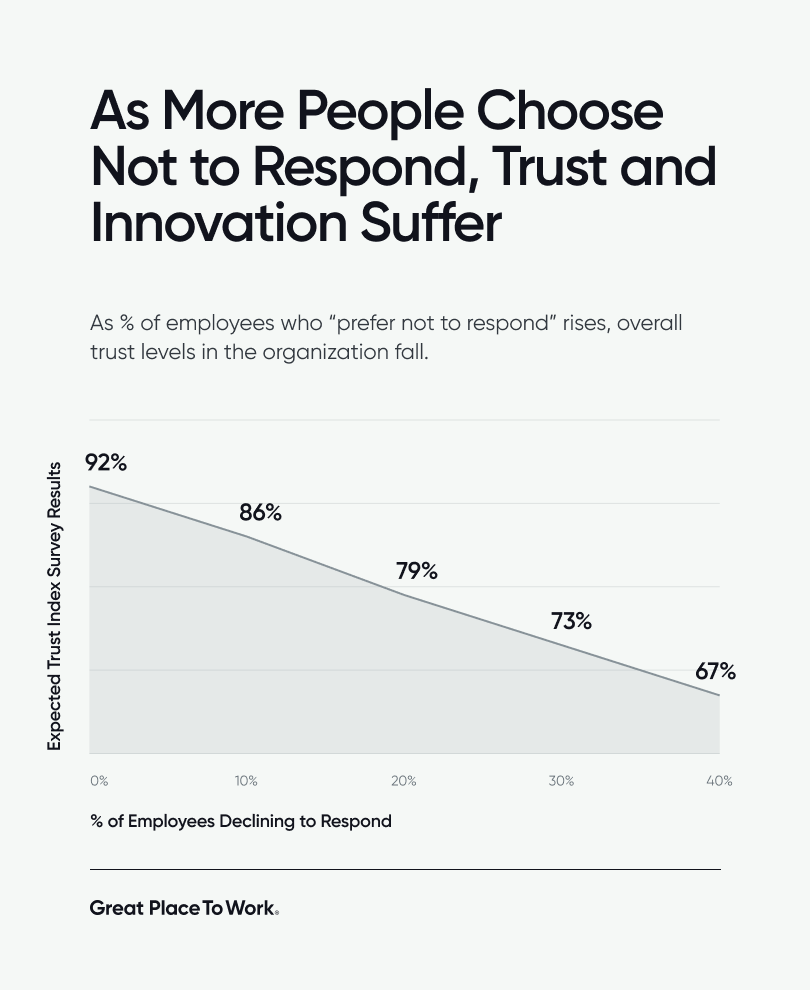DEIB, Diversity & Inclusion, Employee Experience
The cost of offering accommodations is often much lower than what employers expect, and the benefits can profoundly affect your entire workforce.
Are some of your workers unable to realize their full potential?
With 800 million to 1.2 billion neurodivergent people in the world, the answer is likely yes.
“Every company in the world has people who are working for them who are divergent, says Rob Austin, professor of innovation and information technology in the Ivey Business School at the University of Western Ontario. They might be undiagnosed — or have declined to share their diagnosis with their employer. Either way, companies are missing information about their workers.
And when employees can’t bring their full selves to the workplace, companies suffer.
Austin has studied neurodiversity programs in companies such as EY, SAP, and Hewlett Packard Enterprise, and points to research that shows that the entire workforce benefits in companies that address and support neurodivergent employees.
“One of the somewhat surprising findings from our research is the breadth and magnitude of what we call spillover benefits,” says Austin. When companies introduce improved communications programs or inclusive collaboration tools, every employee benefits.
Managers who supervise people in a neurodiversity employment program often report becoming better managers because of their training. Efforts to meet the needs of neurodivergent employees prompt a question that is beneficial for managers of all stripes: How can I put you in a position to be maximally productive?
Neurodiversity is an umbrella term that captures many categories including people with learning disabilities (i.e. dyslexia), developmental disabilities (i.e. autism), or acquired neurodiversity from traumatic brain injuries.
Austin’s definition for the workplace: “Neurodiversity is a term actually I think has broadened considerably to include any condition that masks talent.”
Save the date: Attend our annual company culture conference May 7-9, 2024
Neurodiversity in the workplace
The movement to consider and value neurodiversity in the workplace is fairly young (Austin traces it back to 2004). As awareness grows, many workers still worry about disclosing a neurodivergent diagnosis with their colleagues or employer.
“For a lot of people who are undisclosed, there's sort of a cost benefit calculation,” Austin says. “People historically have not disclosed it because they saw it as likely to do more harm than good. That whatever benefit there was, it was outweighed by the negative implications or the negative labeling or stereotyping that they anticipated.”
According to Great Place To Work® research, when employees decline to share disability status or other parts of their identity in a employee survey, that’s an indicator of lower overall trust in the organization. For every 10% of employees who chose not to respond to questions about their identity, there was a six-point decrease in overall levels of trust, pride, and camaraderie.

What makes employees comfortable enough to share a diagnosis or cognitive difference? Employees are looking for signals of how open their employer will be to making space for individual needs, Austin says.
Are accommodations willingly offered, even when no one is asking for them? Are supervisors and managers receiving training and support materials?
Here’s how to build a more welcoming workplace for neurodivergent employees, which will benefit all your people:
1. Don’t stereotype or assume
Checking your bias helps when dealing with any member of your workforce, and neurodivergent workers are no exception.
“We can't say that all divergent people will have trouble interacting socially because there's actually some examples of people who've been hired into these programs who work really well in customer service roles.”
Companies that have implemented neurodiversity training programs are much more likely to make fewer assumptions about their employees.
“One of the things that some of these organizations have said to me is ‘we don't assume anything anymore,’” Austin says. Instead, organizations get curious and investigate to learn what processes might work better.
When you ask people about their experience, you not only learn about the challenges they face, but also about their unique gifts.
Chandni Kazi, data scientist with Great Place To Work, has shared her personal story about her learning disability in a Ted Talk. When people made assumptions, she says she was labelled klutzy or forgetful. After her diagnosis, she learned that while she struggles with auditory sequential learning and short-term memory, she has a very strong visual memory and could lean into her strengths to offer unique perspectives on projects.
Sharing her diagnosis with her colleagues has been a liberating experience, she says.
“Sharing [my diagnosis] enables me to just ask for what I need…without sharing, I would be more shut down. I would be more reserved. I would be more cautious. And with sharing, I have more freedom to be innovative. I have more freedom to share what I'm thinking, give myself freedom to make mistakes.”
To avoid making unhelpful assumptions, Kazi recommends that employers find ways to focus on the strengths of their workers.
“As a hiring or people manager, please don't focus on my weaknesses,” she says. “Think about how to elevate my strengths.”
Managers must also learn how to be patient collaborators to solve challenges that divergent employees face.
“I'm 33, diagnosed for the past 10-plus years, and I still don't know exactly how I need to be supported,” says Kazi. “I'm constantly trying new things to determine what works for me and what doesn't. Many solutions are short-term, and having variation in my style helps the most.”
2. Embrace a broader range of communication
One of the easiest and cheapest ways to accommodate neurodiversity in the workplace is to vary your communication channels and styles. Divergent employees can struggle with certain forms of communication and broadening your messaging can be extremely beneficial.
Austin gives some simple examples:
- Circulate the agenda for a meeting before the meeting.
- Record the meeting so people can watch the meeting again if they didn't absorb it the first time.
- Present ideas in various formats — visuals as well as text.
Kazi’s team does a “Mad Hatter” exercise: A question is asked, then everyone takes a couple minutes to think about their response and then share at the same time. From there, a discussion starts around what everyone has shared with the group.
“Things like that allow me to gather my thoughts, write them down, and make sure that's what I want to say — and then share,” Kazi says.
Otherwise, she can find herself overwhelmed by the pace of the conversation and unable to track the argument, perhaps misremembering points she wanted to make.
3. Investigate the cost of offering accommodations
Fears over the perceived high cost of offering divergent employees accommodations are often overblown. The Department of Labor reports that nearly half of the accommodations for disabled workers have no cost, citing the median expenditure as $300 for companies that may incur a one-time cost.
That makes sense when you look at accommodations such as sending an agenda before a meeting or recording your Zoom calls.
“People might be very sensitive to certain kinds of sensory stimulus,” Austin gives as an example. If an employee can’t work in the presence of fluorescent lights that flicker at a certain frequency or in a highly noisy environment, the accommodations might be noise-cancelling headphones or changing the lighting.
When you investigate the specifics, it starts to feel very manageable.
“In the programs that are really making strides, we see them establish a formal process for accommodations, and usually the process is not just for divergent people,” Austin says.
Once you agree to meet the individual needs of workers — and can see the relatively low cost to meeting some of those needs — companies can make a big difference in the experience of their people.
“The cost involved in accommodations is more than worth the value of activating the talent on the other side of the equation,” Austin says.
Kazi also recommends that employers find ways to stay flexible as employees’ needs might change over time.
“Things can change,” she says. “In the first couple months at your job, you're not going to say much because you're still learning everything and trying to take it all in. But after a while, you can really understand the best way you learn at your company — and I think that's great for anyone.”
4. Develop support circles
Many companies have found success in offering divergent employees a support network or support circle, Austin says. These interventions can include professional coaching or resources to help navigate a work environment that wasn’t designed for their success.
External coaches can be particularly useful as divergent employees might need to talk to people about things that aren’t specific to the workplace, but will have an effect on their success.
“Someone might need to talk about things that aren't within the realm of what companies are usually comfortable talking about,” Austin says.
A divergent employee might be taking their first ever job at your company, or living on their own for the first time. They might not have the life experience you might expect in a traditional hire.
“Can I afford that car? Is the rent of that apartment too high? These are not things companies really want to talk with their employees about,” Austin says.
An external coach or counselor can fill that gap.
“Individual companies have differences in their support systems, but almost all of them have external and internal support,” Austin says.
5. Find the right partner in executive leadership
No program to support neurodivergent employees will succeed without executive sponsorship.
“The difference between programs that keep getting better and bigger, and those that plateau or stay indefinitely in pilot phase, is executive support,” Austin says.
“If employees are getting consistent signals from executive levels of the company that this is a long-term priority for the company, that's a lot different from having an executive who was super enthusiastic about this, and then he left for another company.”
For Kazi, having a CEO who shares his life story is particularly meaningful.
“If someone is being vulnerable, you can be vulnerable with your own story as well,” she says. “It just makes it feel like more of a warm, inviting space.”
6. Tie your program to business goals
Austin’s search has shown the importance of staying rooted in the language of business performance and the bottom line.
“Of course the social benefits are really important,” he says. “This is transformative to people who thought they were unemployable, or have been labeled unemployable, and now suddenly they're tech company workers.”
But those reasons are often not enough to ensure a program survives in the face of economic trouble or hardship within a company.
“If you talk too much in those terms, then people get the wrong framing for the program,” he says. “Companies will get the idea that this is some sort of a charitable act as opposed to a way of creating real business value.”
Research shows that efforts to support neurodivergent employees are just as good for the company as they are for employees — so showcase that benefit to the business.
Learn more about your workforce
Use Great Place To Work® Certification™ to get unmatched data on how employees feel about their work.














